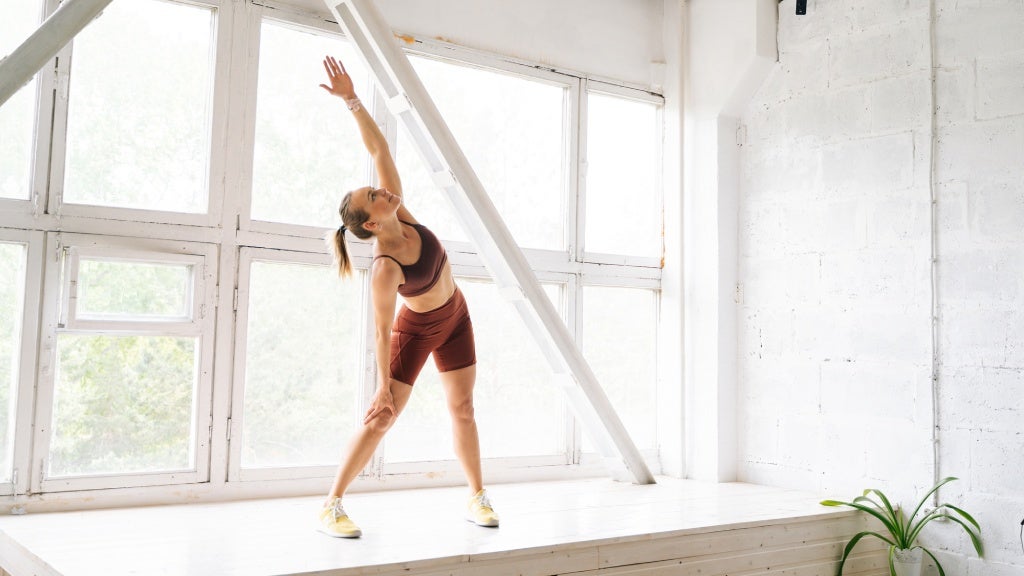The best somatic exercises for runners

If you’ve spent any time on social media lately, you will have seen runners everywhere spruiking the benefits of somatic exercises. But if your first thought is “Ummm, what are somatic exercises?”, you’ve come to the right place.
To find out, we spoke to exercise scientist Brook Turner to find out what somatic exercises actually are, what they are good for, and which ones runners should be doing as warmup stretches, especially in winter. And with the Real Insurance Sydney Harbour 10&5K around the corner, there’s no better time to get started.
What are somatic exercises?
According to Brooke, somatic exercises are a type of movement that focuses on improving mobility, flexibility and releasing tension in the body, through controlled, mindful movements.
“Somatic movements involve actively contracting and relaxing muscles while paying attention to how your muscles feel in any given movement or moment,” she explains. “The goal is to increase flexibility, release tension, and improve overall mind-body awareness.”
But don’t confuse this kind of stretching with static or dynamic stretching, she adds, as somatic exercises are not just concerned with our muscles.
“Somatic stretching emphasises the mind-body connection,” she says. “It’s a sensory experience that translates to improved emotional and body awareness.”
So, do somatic exercises work?
That’s a yes, says Brooke, somatic stretching can be especially beneficial for runners, both pre and post run.
“By improving flexibility, reducing any muscle tension, and enhancing your body awareness, somatic exercises can help you move more efficiently and with less effort, not to mention acting to promote injury prevention by addressing muscle imbalances, and improving posture and alignment,” she explains.
In fact, Brooke believes that using a combination of somatic, dynamic, and some static stretching may actually be the key to performance, recovery, and injury prevention.
“Some runners may find that a combination of stretching works best for them, incorporating somatic stretching for relaxation and body awareness, and dynamic stretching for warming up before a run, especially in winter,” she says.
“Ultimately, it’s essential to experiment and find the stretching routine that feels most effective and supportive for your body.”
Five somatic exercises to do before a run
Before you gear up for your next run, our best winter running tip is to try these quick and easy stretches to get your body prepared.
Quadriceps stretch with pelvic tilts
Stand tall and bring one heel towards your glutes, grabbing the ankle with the hand on the same side. Engage your core and gently tilt your pelvis forward, feeling a stretch along the front of the thigh. Hold the stretch and then switch sides. This variation of the quadriceps stretch incorporates pelvic tilts to further release tension in the hip flexors.
Side Bends
Stand with feet hip-width apart and arms relaxed at your sides. Inhale as you reach one arm overhead and exhale as you gently bend to the side, focusing on lengthening the opposite side of your body. Repeat on the other side. This helps to stretch the sides of the torso and improve lateral flexibility.
Cat-cow stretch
Start on your hands and knees in a tabletop position. Inhale as you arch your back and lift your head and tailbone towards the ceiling (cow position), then exhale as you round your back and tuck your chin towards your chest (cat position). Repeat this fluid movement, focusing on the flow of your breath. Repeat for 3-5 reps.
Standing forward fold
Stand with feet hip-width apart and slowly fold forward from the hips, allowing your arms to hang loosely towards the ground. Hold onto opposite elbows and gently sway from side to side, allowing your upper body to relax and release tension in the shoulders and back. Slowly roll up away from the floor, stacking each vertebra, allowing your neck to drop back and gazing to the sky. Add a small standing back bend if this is comfortable for you. Repeat 3-5 reps.
Child’s pose
Start in a kneeling position with toes together and knees apart. Sit back onto your heels and extend your arms forward, lowering your chest towards the floor. From this position, walk your hands towards one side, feeling a stretch along the opposite side of your torso. Hold the stretch and then walk your hands to the other side. This stretch helps to release tension in the back, shoulders, and sides of the body
Don’t forget, Brooke adds, it’s important to choose exercises that are beneficial for your situation, and it’s always a great idea to check with your GP or a health expert before trying any new workout program.
26 Jun 2024